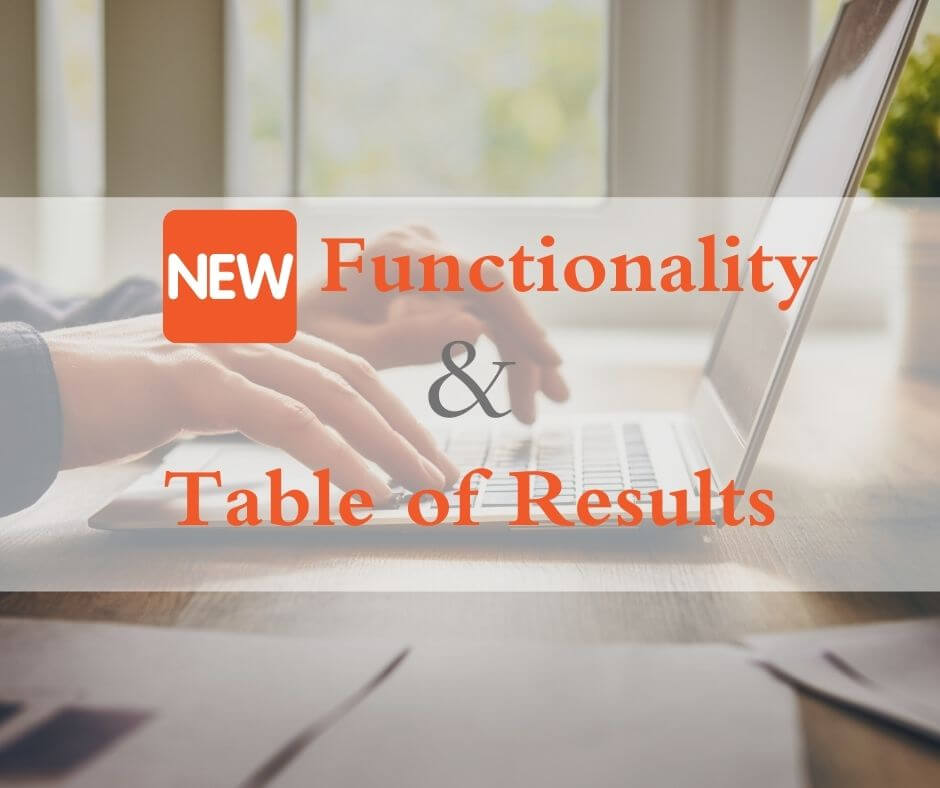The QuickScreen online Dyslexia Test, for students and adults aged 17 and above, has had a significant upgrade with new functionality and reporting for both individuals and organisations.
QuickScreen now presents test scores in a ‘Table of Results’ that is more in line with an educational psychologist’s report.
This information has always been in the data files for the QuickScreen Dyslexia Test, but until now the results were only shown in a visual style using colours and graphs to provide an instant overview to the user. However, the new Table of Results offers more precision, focus and perspective to the scores.
What is in the new Table of Results?
The Table of Results in the QuickScreen Dyslexia test is a two page summary of all the findings from the test.
It is an abridged version of a full assessment showing the:
- scaled score, percentile rankings and descriptor bandings for Cognitive Skills, Underlying Skills and Verbal Processing
- overall indicators of dyslexia as both a percentage and a description (none, borderline, mild, moderate or strong).
This development is critical to help those people who would like to have face to face assessments, but have been unable to do so due to Covid-19 restrictions.
QuickScreen has been an affordable alternative to a session with an educational psychologist for some time with generally accurate results.
Independent statistical research for the QuickScreen dyslexia test, in 2016-2017 and 2018, confirmed that there is strong evidence and a direct correlation between a positive dyslexia indication from the QuickScreen test and an independent dyslexia assessment.
Clearly there are specific situations where an online test may not be a suitable alternative, since it cannot offer the emotional support that some people require, and it is not foolproof, since sometimes errors are made, or instructions are misunderstood.
However, the Pico Education/QuickScreen team do provide an online consultation. This has been effectively utilised, particularly when some follow-up guidance has been needed.
The research results have consistently shown that where a candidate gets a mild, moderately high or strong dyslexia indication, they are very likely to have been correctly identified with dyslexia.
Therefore their QuickScreen report could provide the relevant information when seeking appropriate support within university or the workplace.
“As a consequence of the report, I have a better understanding of my condition. I have also gained full support from my workplace with more understanding and the purchase of equipment in order to help me.â€Â
LE
Another independent statistical analysis for the QuickScreen Dyslexia Test will be conducted by Select Statistical Services in the UK in Autumn 2020.
More Dyslexia Test Functionality and Improvements
In addition to the Table of Results we have added the following functionality to our QuickScreen Dyslexia Test:
- Additional fields for personal background information that, with refinements in the scoring system and our continuous research, mean that test results will show far fewer candidates in the borderline category, giving greater clarity to candidates taking the test
- The ability to further recognise dyslexia in candidates who are often able to use strategies to mask their dyslexic traits, since they may still require special accommodation due to fluctuations in performance especially in moments of stress.
- More explanatory text about how to read the report – including the colour coding for every result in terms of ‘needs attention’, ‘within normal limits’ and ‘above average’
- Extension to the scope and scoring for identifying spelling difficulties by providing a shorter and less challenging dictation
- Additional recommendations for support tools for typing, increasing vocabulary and managing visual stress for improved reading speed and accuracy
- More options for learning support advisors issuing reports to candidates in a business or education environment, as well as the option to view the actual text produced by the user in the literacy test.
“The team at QuickScreen are highly supportive. I required a professional certificate for my dyslexia from a qualified assessor for the TELC language exams I have coming up. I found the assessment report generated by the QS Dyslexia Test to be thorough and the subsequent certificate generated by Dr D. Walker was accepted by TELC.
A.W.
Email Support and Test Certificates
Another benefit of using QuickScreen for your Dyslexia Test is that you are able to request:
- a further consultation with Dr Walker (by email) if there are any problems or if you need to get answers to any query arising from the test profile
- a Dyslexia Test Certificate for your workplace/educational provider.
“Hi Dr Walker, thank you so much for the dyslexia test certificate you have sent me. The Construction Skills Certificate Scheme have accepted it. I have my test next week and they have said they will help me. Many thanks.â€Â
TC
Please contact us if you have any questions about QuickScreen for individuals either at home, or as an organisation for testing staff, recruits and students (free trial available).

